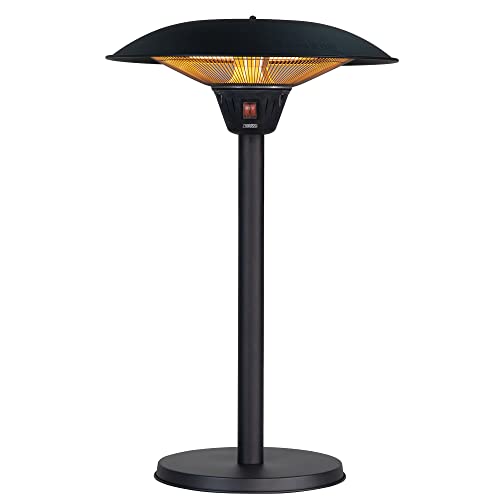How to Choose a Patio Heat Lamp Electric
When it comes to heating your patio, there are many options. Electric heaters are much more convenient than propane models, which require fueling. electric patio heater hanging can be heated in a matter of minutes by pressing a button, or flicking a switch.

They don't emit gasses which could pose an health risk. Some have adjustable settings for heat for different distances.
Heater Type
You can relax in your outdoor living space well into the evening and throughout the year with the right patio heater. Patio heaters are available in many varieties, including freestanding propane or natural gas models as well as wall- or ceiling mounted electric radiant heaters. Your choice is contingent on the dimensions of your area, the your power source and individual preferences.
The majority of patio heaters utilize electricity, liquid or natural gas to generate heat. They emit heat via convection heating in combination with radiant heating. The heat output is measured in watts and then converted to British thermal units (BTUs) to compare. Some models also have adjustable heat settings for greater flexibility.
A patio heat lamp combines an electric burner on a pole with a perforated metal screen that is reflective of the flames and radiates the heat downward to warm furniture, people and other objects. Some patio heat lamps include a reflective reflector over the burner and can be silvered in order to reduce the amount that heat is lost upwards.
Gas patio heaters are the most common heaters for patios. They can heat several tables quickly and evenly. These heaters are portable and run off a propane tank or plumbed into your natural gas line with the latter providing more convenience and lower upfront installation costs, but also needing ongoing costs for fuel.
A growing number of homes are equipped with natural gas lines, which makes them the ideal solution for those who prefer a gas patio heater. They are simple to install, however they require a gas line that's properly installed and operating to be secure. Portable natural gas heaters come with extension hoses to overcome this limitation, but they could be a trip hazard and may pose an additional fire risk when not being used.
Safety
Electric patio heaters can be used safely in enclosed areas since they allow heat to radiate upward and not outward. They are not designed to be used under a non-protected roof. The heater should be placed at a minimum of 6" away from the ceiling, or 18" away from the adjacent wall to avoid fire hazards.
The propane and gas patio heaters are only suitable for installation in enclosed areas that have a durable cover specifically designed for outdoor use. The covers are typically made of fire-retardant fabric and have a roof that can be closed. The safety concerns associated with these kinds of outdoor patio heaters are due to the flame and fumes they produce. They should be placed away from items that ignite, such as chairs and curtains.
When installing an electric patio heat lamp or any other type of patio heater, be sure to follow the manufacturer's instructions and safety measures carefully. Select a heater that has been awarded UL and CSA safety certifications and be sure to go through the owner's instructions thoroughly. Be extra cautious when it comes to pets and children, and make sure the heater is not in their reach while it's running. Some patio heaters that are freestanding, such as EUROM's, come with an automatic tipping safety that shuts off the device when it falls.
If your patio heater is connected to natural gas lines, it's important to check the condition of the line on a regular basis and test it for leaks by an experienced professional. If the line needs to be replaced then you should hire a licensed plumbing professional. A professional will be in a position to determine if the line should be routed through an underground pipe or not. A professional can also make sure the heater in the patio is plugged into an outlet that is GFCI (ground fault circuit interrupter) rated to protect against electrical shocks and fires.
Installation
The the height at which a patio heater is placed affects how much heat it will radiate into the area. The heater should be mounted away from any surfaces such as plastic and wood that may deform. You can mount the heater on a structure, wall or any other surface with standard mounting brackets. Certain models come with a soft starter that lowers the current at the highest level to safeguard your circuits.
